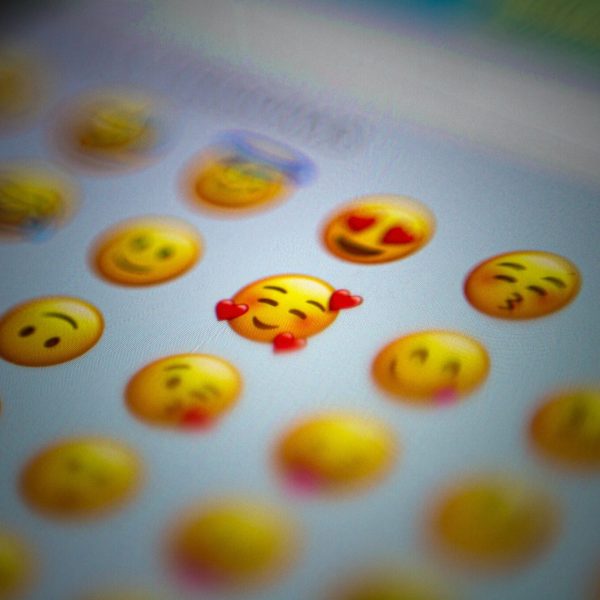
Is It Okay To Use Emojis At Work?
Emojis are everywhere these days. Most commonly, you’ll see them in text messages or social media posts, but you can also find them in public bathrooms, asking for a rating of cleanliness. You can’t hide from them in today’s world.
But are emojis appropriate to use at work? Opinions are split, but based on this survey of 560 individuals, the majority of workers find emojis appropriate if used thoughtfully!
In general, young professionals use emojis and find them appropriate and even value adding at work, while older professionals tend to find emojis inappropriate in the workplace. So how can you decide when emojis are appropriate?
“It Makes Everything Easier.”
Using symbols and images to communicate has been popular throughout human history – just think of hieroglyphics! This is not without reason. Emojis provide a simplified way to communicate. Everyone can understand images and therefore emojis. It doesn’t matter which language you speak or what cultural background you have – a smiling face means the same thing everywhere.
Using emojis, you can better illustrate your message in the context or tone of voice you mean. Sometimes it might not be easy to express your feelings about something. But if you add the right emoji, your concern may be better understood. Especially if English is not your native language, it can be quite helpful at times to add a matching emoji so that your message is understood the right way.
“Using Emojis In The Workplace Makes Work More Fun.”
Many people use emojis to lighten the mood of conversations and to show their support to others. This is backed up with the research finding that 81% of people believe that people who use emojis are friendlier and more approachable.
When you see an emoji in your messages, it can lift your mood and make the whole day seem brighter. Especially if you’re working from home with less personal interactions, this can improve the experience of a normal work day drastically.
When Can You Use Emojis?
Now, you probably wouldn’t use emojis in your email response to the HR team who is still chasing documents for your contract. And you shouldn’t.
But you certainly can use emojis at work, if you consider who you are talking to, what platform you are on, and if there are guidelines within your company for the use of emojis.


Know Your Audience
Not everyone receives emojis the same way. As mentioned earlier, many older professionals (45+ years) will avoid using emojis, while most young professionals won’t mind or may even appreciate you using emojis. Having said that, many working professionals in their 60s will regularly use a ‘thumbs up’ emoji in response to certain emails.
You should consider who will see your message: Is there any chance that a customer could see the email that you’re typing later on? Are you talking to a group of people where you don’t know every person very well? In these cases, you should avoid using emojis.
If you are communicating with team members who you are close with or you know they are comfortable using emojis, you can of course use them. Still, you should ‘season’ your message with an emoji or two, not drown it with hundreds of emojis. Use them at a reasonable rate. Always make sure every emoji is used in a clear, understandable context.
Check Your Platform
Not every platform is suitable for emojis. While you can send as many emojis as you like to your teammate on Slack or any other instant messaging tool that your company uses, you should reconsider using emojis in a run-of-the-mill project update email.
Typically, the more formal the communication, the less emojis. If in doubt, less (or none at all) is best.


Consider Others’ Perspectives
Always consider how others could interpret the emojis you’re using. You might be thanking a colleague for his great work with an emoji blowing a kiss. But the recipient could interpret this as flirting and consider it inappropriate.
Therefore, before sending an emoji, always think about how the person receiving your message may interpret it. If you’re not sure which emojis are appropriate to use in the workplace, the ‘smiling’ and ‘thumbs up’ emojis should be your bread and butter.
Using emojis at work can be great, as long as you always consider three things: Your audience, your platform, and potential interpretations. But don’t let that stop you from brightening up your colleagues’ day with some appropriate emojis! 🌞

Leonie Schaefer is a Social Media Marketing Intern at Outcome.Life where she helps create content to empower better employability outcomes for international students and provide host companies with diverse and passionate interns. An international student herself, Leonie is a bilingual content creator who also enjoys playing the Australian sport, polocrosse (a mix of polo and lacrosse).
If you have any questions...
The Outcome.Life team are always here to answer any questions or help with any problems you might encounter during your internship.
You can contact us between 9am – 5pm, Monday – Friday at:
Phone: 03 8899 7424
Email: hello@outcome.life
